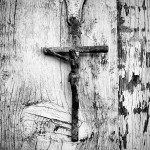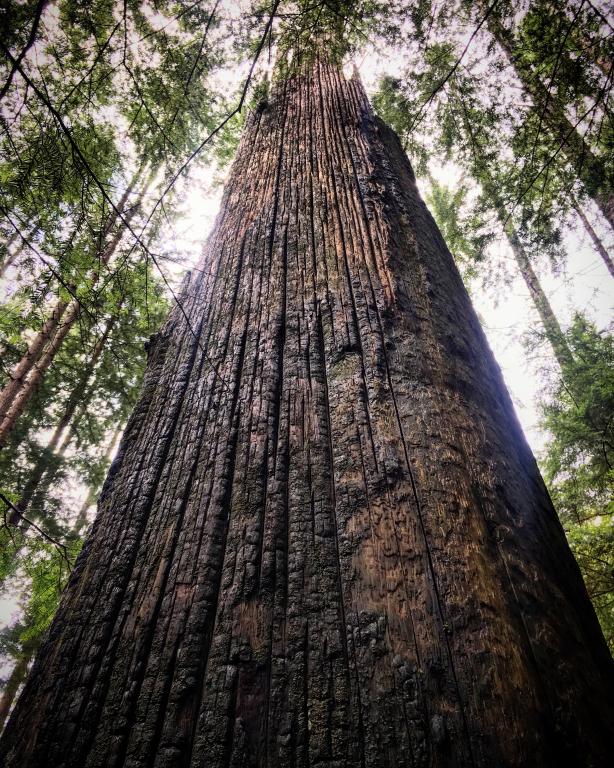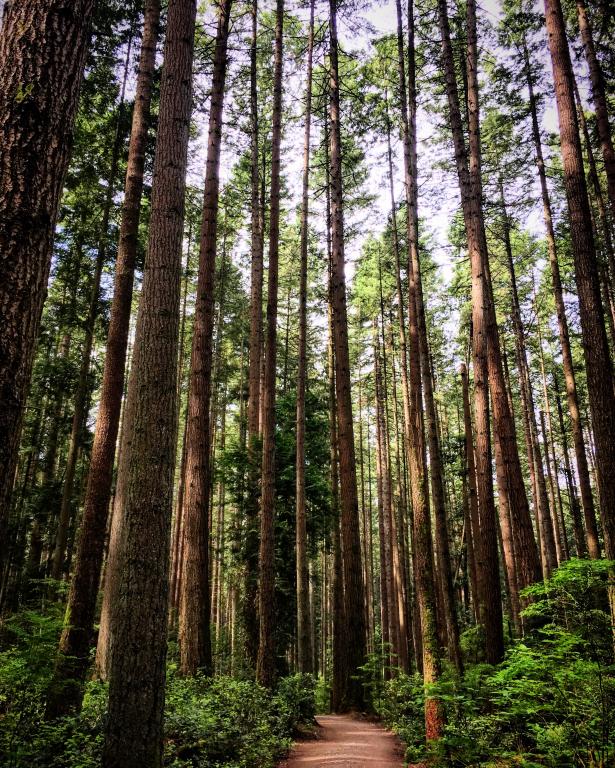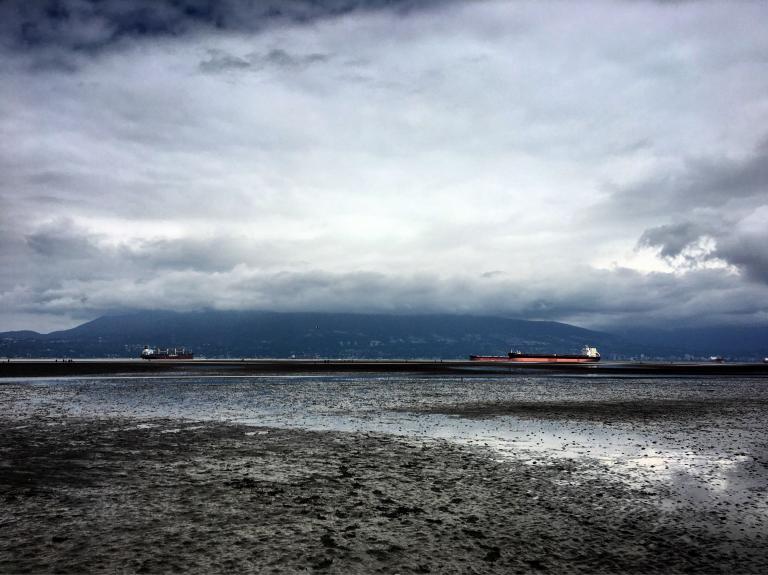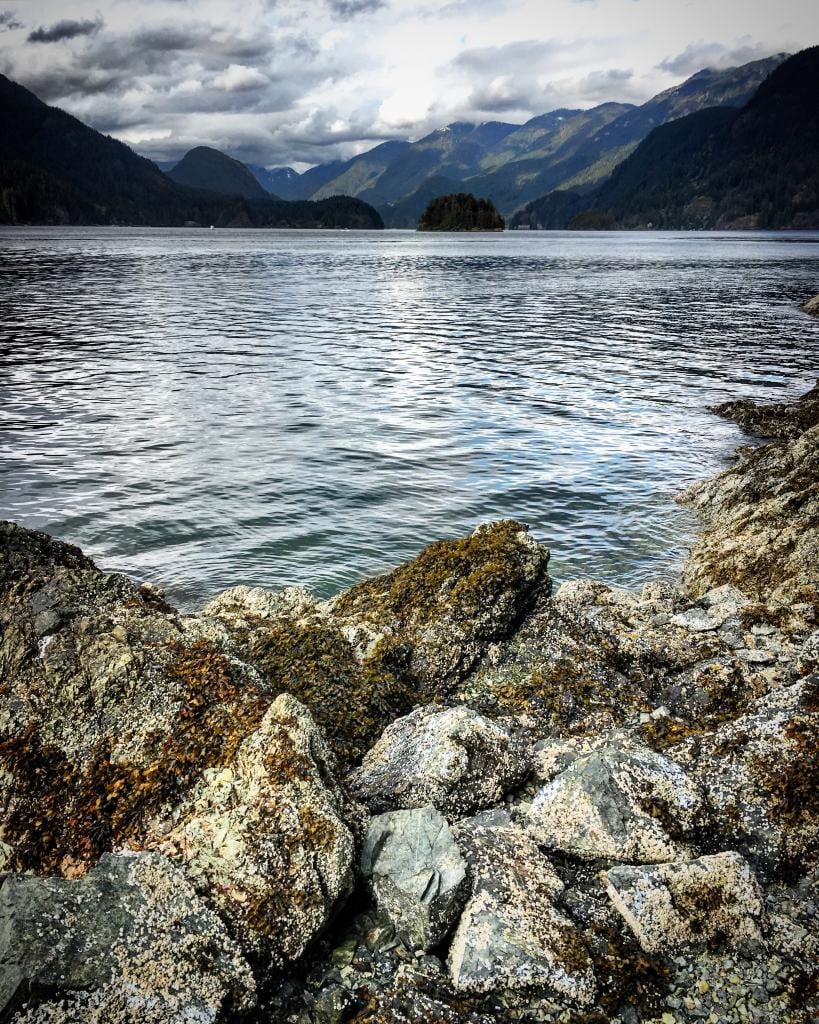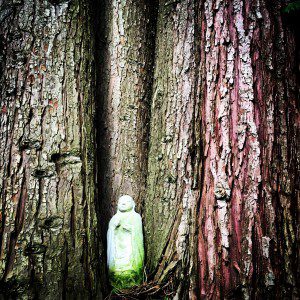
On the road again. Heading south from Bellingham to Carlton, Oregon for another monastery stay for my PhD research. I decided to make my way to Great Vow Zen Center in Clatskanie, Oregon, just southwest of I-5 over the border from Washington. I had heard good things about their work-stay program, like several West Coast Zen centers, they have a gardening program integrated with their spiritual practice. So being a Sacred Site Pilgrim I thought I would check it out!
When I arrived, the young attendants offered me some lunch without even really knowing who I was. I ate in silence, and was then encouraged to wander around the campus and grounds. To be honest, the campus felt like an old high school classroom building and gymnasium, but the shrines and sitting areas were neat and smelled sweet with incense.
Across the back lawn a small pagoda marked the entrance to a forest trail. Along the trail devotees had carefully placed and arranged hundreds of small Bodhisattva statues mostly of Jizo, a Japanese Bodhisattva of intercession with savior-like qualities. Some statues were covered with moss, others with decomposing Tibetan prayer flags. Some statues were housed in small shrine boxes nailed to trees, while others were laid at the foot of trees, or lined the well groomed pathway. The forest was still and quiet, and some shrubs had begun to leaf. The path wound around the forest and at each bend a new arrangement of color and statuary appeared. Some shrines were dedicated to deceased loved ones, others held the prayers of practitioners.
![IMG_5490[1]](https://wp-media.patheos.com/blogs/sites/601/2016/02/IMG_54901-300x225.jpg)
Having studied forestry, I was not initially disturbed. But as I wound my way down the hillsides and past steeper and steeper, larger and larger areas of clear cuts, I began to reflect on the Zen Center. Much of the 23 acres of the Center were dedicated to open space, structures and gardens, but a large chunk had been left as forest. The Jizo shrines left a visible reminder that the space was traversed by human desire, memory and intention. The clear cuts too bore our mark, but the stark outcome was all too visible. I stopped my truck to look our over the scene. Yes the trees would grow back, and yes the wood was necessary for our lives. But the Oregon communities I had passed through didn’t seem to be benefiting much from the revenues. And the wood is going to feed a desperately hungry global economy that is wreaking havoc on the climate. Most of the logs would most likely be shipped to Asia. Neither forest was free of human intention, but the results were catastrophically different.
Continuing my drive, I began to reflect. Should we stop harvesting trees? Not necessarily, but certainly we could begin to reassess the ways our lives intersect with both kinds of spaces. What seemed important was not whether or not we harvest trees, but seeking to understand in what ways my life makes more clear cuts necessary. Understanding whether my spiritual practice includes careful attention to some sacred place, wild or not.

